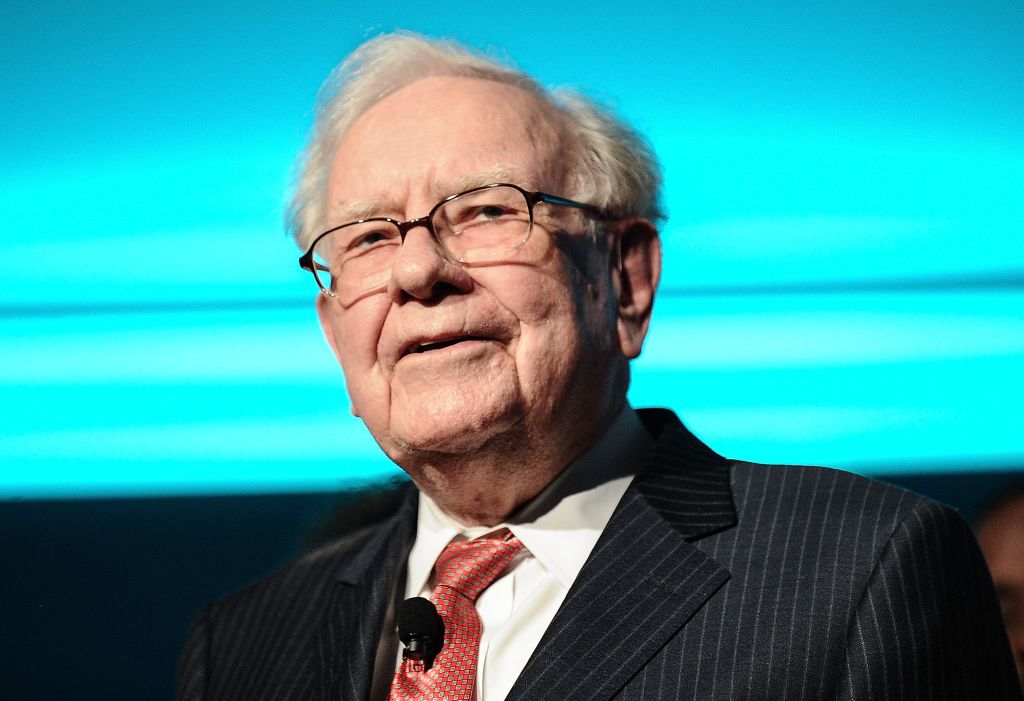4 Great Apps for Investors
Robinhood, Acorns, StockTwits and Openfolio can give mobile investors a leg up on the market.

Whether you’re shopping, dating or ordering a pizza, it’s increasingly likely that you are using a mobile app. App usage grew by 76% year-over-year in 2014, according to Flurry, a mobile analytics firm owned by Yahoo. It should come as no surprise that investors are jumping on the app bandwagon as well, with everyone from big brokerages to small start-ups rolling out offerings for smartphones and tablets. Granted, choosing stocks isn’t quite as easy as choosing between pepperoni and anchovies, but mobile apps can be part of a smart investor’s toolbox as long as they are used wisely.
Here are four investing apps that deserve a look. All are free and available for both Apple and Android devices, unless otherwise indicated, and each offers unique and potentially useful services to investors.
Robinhood
When mobile brokerage Robinhood officially launched in December 2014, it began on-boarding the more than half-million people who signed up to download the app once it became available. Why all the hype? Robinhood charges no commission to trade more than 5,000 U.S.-listed securities, and there are no minimum balance requirements on an account. Eighty percent of the initial user base was between the ages of 18 and 29, but you don’t have to be a tech-savvy millennial to see the appeal of avoiding the $7 to $10 per trade commission typically charged by online brokerages.
From just $107.88 $24.99 for Kiplinger Personal Finance
Become a smarter, better informed investor. Subscribe from just $107.88 $24.99, plus get up to 4 Special Issues

Sign up for Kiplinger’s Free Newsletters
Profit and prosper with the best of expert advice on investing, taxes, retirement, personal finance and more - straight to your e-mail.
Profit and prosper with the best of expert advice - straight to your e-mail.
Using the app is easy. Once you link your bank account and find a stock you like, simply tap “Buy” and specify the number of shares you’d like to purchase. The trade is executed in real time. For now, you can only buy and sell U.S.-listed stocks and exchange-traded funds; no mutual funds, options or bonds. Margin trading—buying securities with money borrowed from your broker—as well as an Android version of the app (it’s currently only available on Apple devices) are expected to roll out later this year.
Zero-commission trades have been tried before, but Robinhood says it will eventually generate enough revenue from other sources to compensate for the lost commissions: for example, from the interest it earns on the uninvested cash in customer accounts; from the interest it will earn on margin accounts once they debut; and from the commissions it charges to trade foreign securities. “It’s the classic Silicon Valley model,” says Grant Easterbrook, a former financial analyst at Corporate Insight who is now working on a financial tech start-up. “You build a user base first and figure out how to monetize it later.” Joining that user base just got easier. Earlier this month, Robinhood sent invitations to its entire waiting list. The app is now open to everyone.
Acorns
Microinvesting app Acorns is hoping to revolutionize the way you view loose change. Once linked to a bank account and one or more credit or debit cards, the app rounds up your purchases to the next dollar and invests the difference on your behalf. Say you buy a cup of coffee for $1.89. Acorns would set aside 11 cents from your bank account. When your spare change adds up to $5, it is invested. Acorns doesn’t charge commissions on trades, but it does levy a fee of $1 a month for accounts with balances under $5,000. The fee is 0.25% annually for accounts over $5,000.
To determine where the money gets invested, the Acorns app asks you some questions to ascertain your investing style and goals. Then it recommends one of five portfolios, ranging from conservative to aggressive. Each portfolio contains a mix of six index ETFs that invest in large-company U.S. stocks, small-company U.S. stocks, emerging-markets stocks, real estate stocks, corporate bonds and government bonds.
Some investors might feel limited by the preset allocations in the five portfolios. Every investor in Acorns’ most aggressive portfolio will find 30% of his or her money allocated to real estate stocks, like it or not; the most conservative portfolio puts 60% in bonds and 40% in stocks, a higher equities weighting than some people might prefer. Investors looking to save for a relatively short-term goal, such as a vacation, should be aware of the very real possibility of losing money on their investment, even in the most conservative portfolio. That wouldn’t happen if the money was in a piggy bank or bank savings account.
The automated investing model is nevertheless attractive for investors who want to put away a little extra but who might not have the discipline to do it otherwise. “If you ask someone to save a lump sum this year for a car, it may seem like a lot,” says Easterbrook. “But saving a little chunk out of every paycheck, for instance, seems a lot more manageable.”
[page break]
StockTwits
We’re living in the information age, but perhaps counterintuitively, it may be harder than ever to find good market intel. Sure, you no longer have to wait for the newspaper to arrive to see the returns of your favorite stock, but type that stock’s ticker symbol into Google and you’ll be met with a virtual deluge of news, advice and insight. How can one person be expected to cut through the noise? There’s no magic pill. But one way mobile apps are addressing the problem is to make individual investing less individual.
Consider StockTwits, a social network for investors. A social network that began as a Twitter supplement, StockTwits has become a full-fledged social media platform with more than 300,000 users, including investors, market professionals and public companies. Users publish Twitter-like updates about markets and individual stocks while using so-called cashtags (dollar sign plus ticker symbol; e.g., $AAPL for Apple shares). The app can then aggregate user data in real time to determine which market topics and investments are trending and gauge investor sentiment for individual stocks, which users can add to watch lists.
And since it is a social network, after all, part of the appeal of StockTwits is finding like-minded investors to interact with who offer potentially valuable insights about markets and securities. In addition to tracking cashtags, you can follow users you like by clicking the “follow” button on their profile pages or posts. You can also send direct (nonpublic) messages to users.
Openfolio
A social network of a different sort, Openfolio lets you be as social with your investments as you want to be. The app allows users to share their portfolios’ holdings within their specified circles by creating an investing “benchmark”—a group of fellow investors to follow that can include trusted friends and colleagues as well as financial professionals who have made their profiles public and financial gurus, such as Warren Buffett and Carl Icahn, whose portfolios Openfolio tracks from public sources. Holdings are shared on a percentage basis, not in dollar amounts, so no one knows how much you are actually worth.
You don’t need to venture outside of your circles if you don’t want to, and you can keep your portfolio completely private if you want. The app, only available on Apple devices for now, allows you to compare your portfolio’s return with that of your benchmark as well as with other demographic swaths of Openfolio’s user base—from age and gender to profession and even astrological sign. The idea isn’t to keep up with the Joneses but rather to learn from the portfolios of investors you admire and trust.
“If surrounding yourself with a network of smart investors makes you a more confident investor, maybe that’s a good thing,” says Easterbrook. “But you probably shouldn’t be trying to copy hedge fund strategies.”
Are mobile investing apps safe?
Security concerns are natural when it comes to mobile investing. After all, the prospect of having investing power at your fingertips raises the possibility of leaving that power on a table at Starbucks. “Any time you provide personal information to a third party, you increase the likelihood of a data breach,” says Paul Stephens, director of policy and advocacy at the Privacy Rights Clearinghouse, a nonprofit consumer-education group.
To sign up for Acorns or Robinhood, both registered broker-dealers, you’ll have to link a bank account and disclose personal information, such as your Social Security number and date of birth—par for the course for opening any investing account. Both sites say they do not store users’ bank account information after it has been authenticated. While no transmission of information over the Web is ever 100% secure, Acorns and Robinhood boast bank-level security on their servers, and information sent and received by the apps goes through what’s known as secure sockets layer (SSL) encryption—the same level of security used at virtually all online brokerages. Stephens says the way these apps move money, via electronic funds transfer (EFT), is standard practice and the most secure option.
In addition, both Acorns and Robinhood are members of SIPC, which insures account holders for up to $500,000 in the event a brokerage fails.
Profit and prosper with the best of Kiplinger's advice on investing, taxes, retirement, personal finance and much more. Delivered daily. Enter your email in the box and click Sign Me Up.

Ryan joined Kiplinger in the fall of 2013. He wrote and fact-checked stories that appeared in Kiplinger's Personal Finance magazine and on Kiplinger.com. He previously interned for the CBS Evening News investigative team and worked as a copy editor and features columnist at the GW Hatchet. He holds a BA in English and creative writing from George Washington University.
-
 How to Safely Open an Online Savings Account
How to Safely Open an Online Savings AccountOnline banks offer generous APYs that most brick-and-mortar banks can't match. If you want to make the switch to online but have been hesitant, I'll show you how to do it safely.
-
 7 Ways to Age Gracefully Like the Best Stock Photo Seniors
7 Ways to Age Gracefully Like the Best Stock Photo SeniorsAs a retirement editor, I've gleaned valuable wisdom (and a lot of laughs) from one older couple that tops the seniors' stock photo charts.
-
 My First $1 Million: Banking Executive, 48, Southeast U.S.
My First $1 Million: Banking Executive, 48, Southeast U.S.Ever wonder how someone who's made a million dollars or more did it? Kiplinger's My First $1 Million series uncovers the answers.
-
 If You'd Put $1,000 Into Coca-Cola Stock 20 Years Ago, Here's What You'd Have Today
If You'd Put $1,000 Into Coca-Cola Stock 20 Years Ago, Here's What You'd Have TodayEven with its reliable dividend growth and generous stock buybacks, Coca-Cola has underperformed the broad market in the long term.
-
 If You Put $1,000 into Qualcomm Stock 20 Years Ago, Here's What You Would Have Today
If You Put $1,000 into Qualcomm Stock 20 Years Ago, Here's What You Would Have TodayQualcomm stock has been a big disappointment for truly long-term investors.
-
 If You'd Put $1,000 Into Home Depot Stock 20 Years Ago, Here's What You'd Have Today
If You'd Put $1,000 Into Home Depot Stock 20 Years Ago, Here's What You'd Have TodayHome Depot stock has been a buy-and-hold banger for truly long-term investors.
-
 If You'd Put $1,000 Into Bank of America Stock 20 Years Ago, Here's What You'd Have Today
If You'd Put $1,000 Into Bank of America Stock 20 Years Ago, Here's What You'd Have TodayBank of America stock has been a massive buy-and-hold bust.
-

 If You'd Put $1,000 Into Oracle Stock 20 Years Ago, Here's What You'd Have Today
If You'd Put $1,000 Into Oracle Stock 20 Years Ago, Here's What You'd Have TodayORCL Oracle stock has been an outstanding buy-and-hold bet for decades.
-
 If You'd Put $1,000 Into Sherwin-Williams Stock 20 Years Ago, Here's What You'd Have Today
If You'd Put $1,000 Into Sherwin-Williams Stock 20 Years Ago, Here's What You'd Have TodaySherwin-Williams stock has clobbered the broader market by a wide margin for a long time.
-
 If You'd Put $1,000 Into UnitedHealth Group Stock 20 Years Ago, Here's What You'd Have Today
If You'd Put $1,000 Into UnitedHealth Group Stock 20 Years Ago, Here's What You'd Have TodayUNH stock was a massive market beater for ages — until it wasn't.
-
 If You'd Put $1,000 Into Berkshire Hathaway Stock 20 Years Ago, Here's What You'd Have Today
If You'd Put $1,000 Into Berkshire Hathaway Stock 20 Years Ago, Here's What You'd Have TodayBerkshire Hathaway is a long-time market beater, but the easy money in BRK.B has already been made.